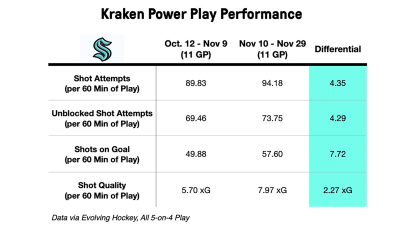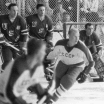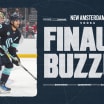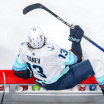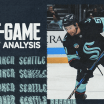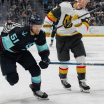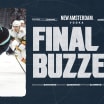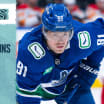What we see is that the Kraken are shooting the puck more overall and creating more dangerous chances, with the biggest rate of increase coming in shots that are on target. That kind of improvement hints that chemistry can manifest in measurable ways!
There's one last thing that is important to look at and that is shooting percentage. We can definitely be confident that improvement is happening on the power play because of the numbers we just looked at - underlying behaviors ARE getting better and that's our best predictor of success. But, that may not mean that goals always come at the same pace as they are right now.
During the first 11 games, the Kraken's power play shooting percentage was just 5.2% - that is well below the league average power play shooting percentage this season (12.5%). That difference indicates a degree of luck that was NOT working in the Kraken's favor. And this is what "regression" is all about. When a measure is far away from average, it will eventually work its way closer to average. So, for Seattle, that shooting percentage was always bound to improve.
Similarly, in the latest 11 games, the Kraken's power play is finishing at a rate of 22.13%, so there's some over-correction (regression) coming to again get closer to that average number. For what it's worth, on the season as a whole, the Kraken's power play shooting percentage is 10.63%, so while there's still probably going to be some ebbs and flows, on the season as a whole the total production is almost right.
There are even more things we can examine, of course: how quickly is the Kraken getting into their power play formation or have their zone entries become more effective? Those will be fun topics for another day. But for now, we can see that when it comes to the power play clicking, the team is getting some puck luck, but they are also improving the underlying play that leads to more success.

